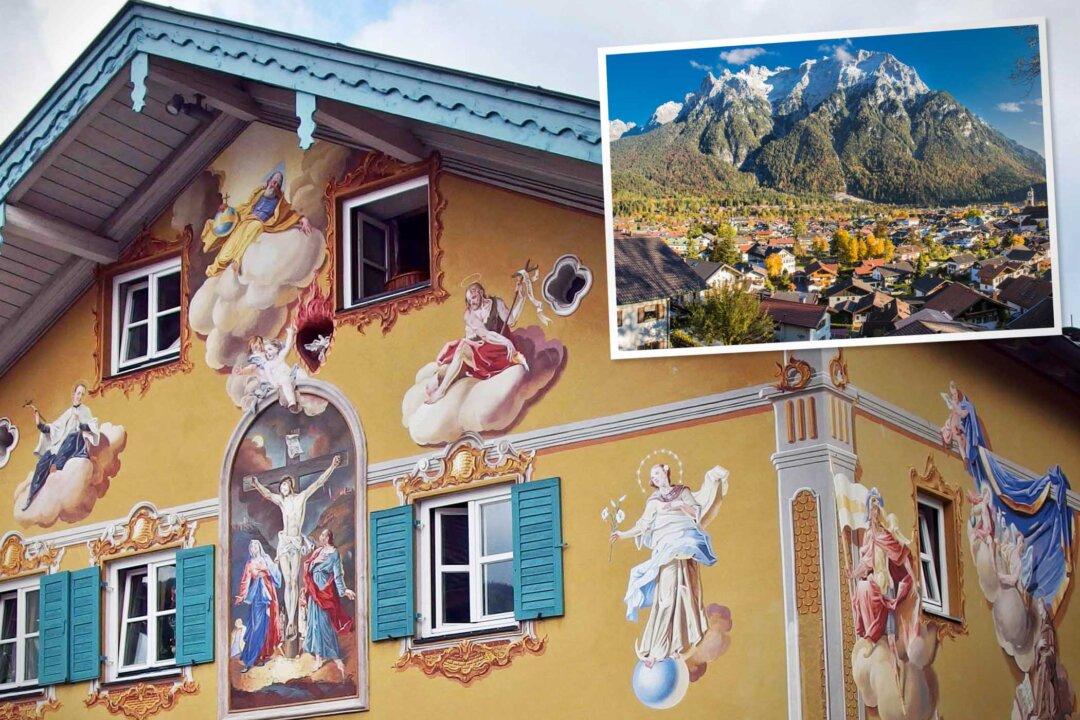A small stream runs down a central cobblestone street in the little Alpine town of Mittenwald in Bavaria, Germany, joining what is almost a fairytale scene, even piercing through to the divine.
Saints, deities, and the Lord Himself appear in brilliant colors everywhere.






